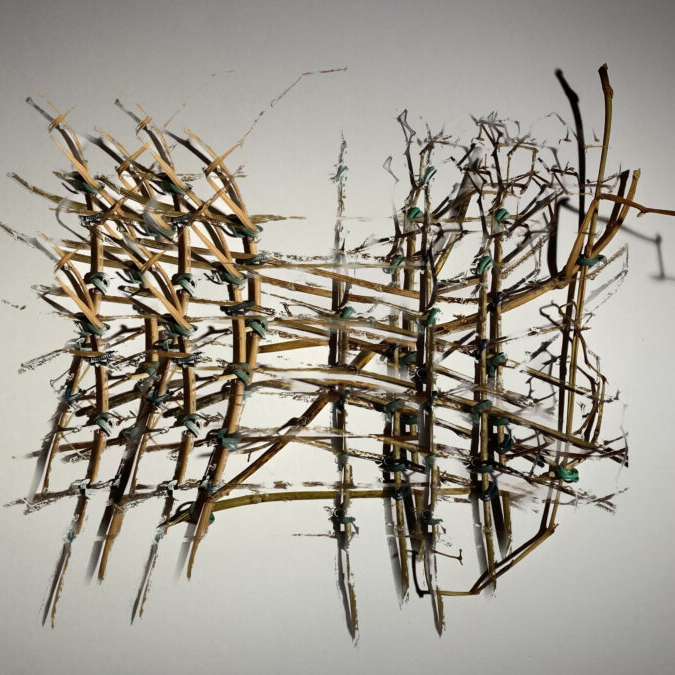With the Wild
Artmaking as collaboration with wild landscapes and their inhabitants
– Pietro Consolandi
Weaving and Feeling: locating ourselves in a limitless cosmos
(…)
From this story we understand how the Ocean inhabitants met by the British and Dutch explorers perceived their watery world in a different way, and therefore translated it into different cultures, structures, and maps. One strong example are the Marshallese stick charts, in which sticks and shells are used to represent the journey routes departing from each of the islands to the surrounding ones, following and interacting with ocean swells and their relationship with islands and the seafloor. These beautiful objects are unreadable for anyone who might see them from outside the relational environment of the islands where they were realised, but they become a wayfinder when immersed in them.
Grasping this relational and metaphorical meaning of the stick charts, Brazilian artist Renata Pelegrini recently developed a series called MAPPA (2022-ongoing) in which she interprets pacific traditional knowledge and draws inspiration from it.1In her works she interweaves orchid branches from her garden, creating objects that look very much like stick charts but do not want to locate places in the world. Rather, she uses the green laces that are used to direct the growth of the flowers in commercial flower shops as the shells that locate islands in the original charts and leaves the end of the branches—the roots—open ended, pointing at multiple directions. Through her work, the artist wants to invite the public to think about their embeddedness in nature, locating themselves within, or in relation to, a point in the chart. Orchids, Pelegrini explains, are epiphyte plants: they can grow even without soil or pots, living together with other organisms, and this metaphor can be useful for humans too. In using the not commonly praised parts of orchids, and re-purposing the plastic knots used to direct them in a human-pleasing way, these charts talk about embodying the innate knowledge of such social plants, listening to the ecosystem just as the Pacific master navigators who are able to listen to deep ocean swells by lying with their body on the bottom of the canoe.
The act of weaving further recalls that of meeting, in the case of the stick charts it is through a line, while in more circular designs it can be that of a hug, or of holding hands. In another recent series, Pelegrini engages with the coastal tradition of women communities in the Northeast of Brazil, where it is common for men to work at sea (mainly in shipping and fishing) while women remain on the shore. Here, for especially long trips, women developed a number of songs that are sung while holding hands—similar to playing ring-a-ring o’roses—usually by the moonlight. In Portuguese, this playful ritual is called ciranda, and this inspired a series of “singing” sculptures where moulded copies of found items make noises when they are put in motion, mimicking the looping movement of the singing women. This work, also connected to the act of weaving, reminds the audience of the role of singing and storytelling in maintaining the connections that are created throughout geographies, but also of the role of time in perceiving space and travel—in this case waiting for journeymen to return.
(…)
